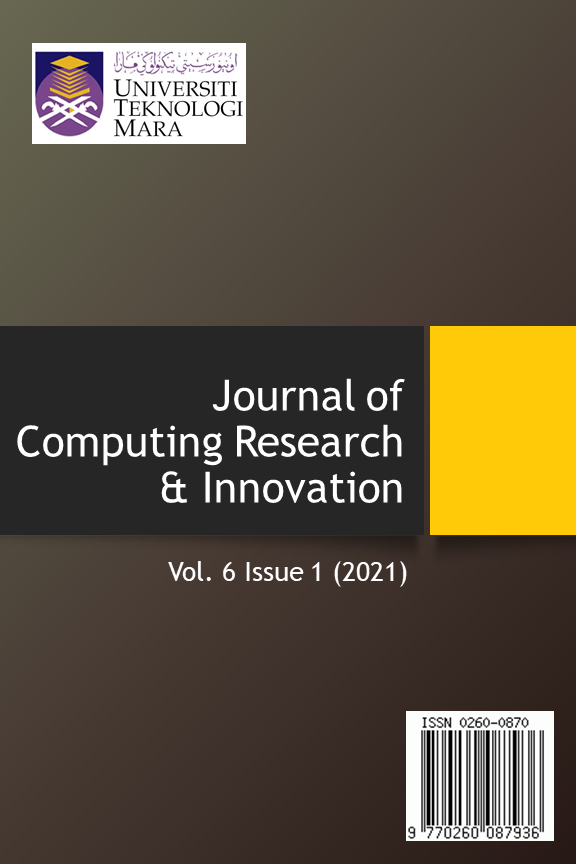Learning Styles Preferences Using Fuzzy Logic System
DOI:
https://doi.org/10.24191/jcrinn.v6i1.171Keywords:
learning styles, VARK, Fuzzy Logic, Fuzzy Inference SystemAbstract
Every individual has their own natural or habitual pattern of gathering and processing information in learning situations. The different environment between school and university studies will pose a significant impact on the learning style of students. The objectives of this study are to analyse the most preferred learning style among first-year diploma students in Universiti Teknologi MARA (UiTM) Perlis Branch and compare the preferred learning style among male and female students using the Fuzzy Logic System. There were nine variable inputs in determining the fuzzy logic learning styles which are reading likeness, by nature, thinking time, speaking rate, activity level, activity enjoyment, visual distraction, auditory distraction and using instruction to obtain the VARK (visual, auditory, read/write, kinaesthetic) learning styles output. The results showed that 32% of the students prefers visual learning styles based on the VARK questionnaire while for the fuzzy inferences system, 40% of the students prefer visual learning style. Additionally, 45% of male students preferred visual learning styles followed by reading/writing and kinaesthetic learning styles of 20%. Among female students, 34% of them also showed preferred visual learning styles, followed by reading/writing learning styles. It is concluded that the vast majority of UiTM Perlis Branch students prefers visual learning styles in their studies.
Downloads
References
Alian, M., & Shaout, A. (2017). Predicting learners’ styles based on fuzzy model. Education and Information Technologies, 22(5), 2217-2234.
Almohammadi, K., & Hagras, H. (2013). An adaptive fuzzy logic based system for improved knowledge delivery within intelligent ELearning platforms. IEEE International Conference on Fuzzy Systems, 1–8.
Alkooheji, L., & Al-Hattami, A. (2018). Learning Style Preferences among College Students. International Education Studies, 11(10), 50-63.
Geetha, M. C., & Praveena, K. B. (2017). Learning styles of secondary school students and their interest in biological science. Learning, 2(5).
Moktar, B., & Mohd Razali, M. H. (2018). A Fuzzy Logic Approach to Measure Underweight Among Kindergarten’s Kids. Journal of Computing Research and Innovation, 3(3), 36-45. Retrieved from https://crinn.conferencehunter.com/index.php/jcrinn/article/view/76
Peyman, H., Sadeghifar, J., Khajavikhan, J., Yasemi, M., Rasool, M., Yaghoubi, Y. M., ... & Karim, H. (2014). Using VARK approach for assessing preferred learning styles of first year medical sciences students: a survey from Iran. Journal of clinical and diagnostic research: JCDR, 8(8), GC01.
Singh, L., Govil, P., & Rani, R. (2015). Learning style preferences among secondary school students. International Journal of Recent Scientific Research, 6(5), 3924-3928.
Shuib, L., Zavareh, A. A., & Abdullah, R. (2014). Fuzzy multi-criteria evaluation of research materials based on learning style. ARPN Journal of Engineering and Applied Sciences, 9(10), 1713-1717. (SCOPUS-Indexed).
Downloads
Published
How to Cite
Issue
Section
License
Copyright (c) 2021 Wan Nurshazelin Wan Shahidan, Nur Rusmawati Ishak, Siti Nor Nadrah Muhamad

This work is licensed under a Creative Commons Attribution-ShareAlike 4.0 International License.


